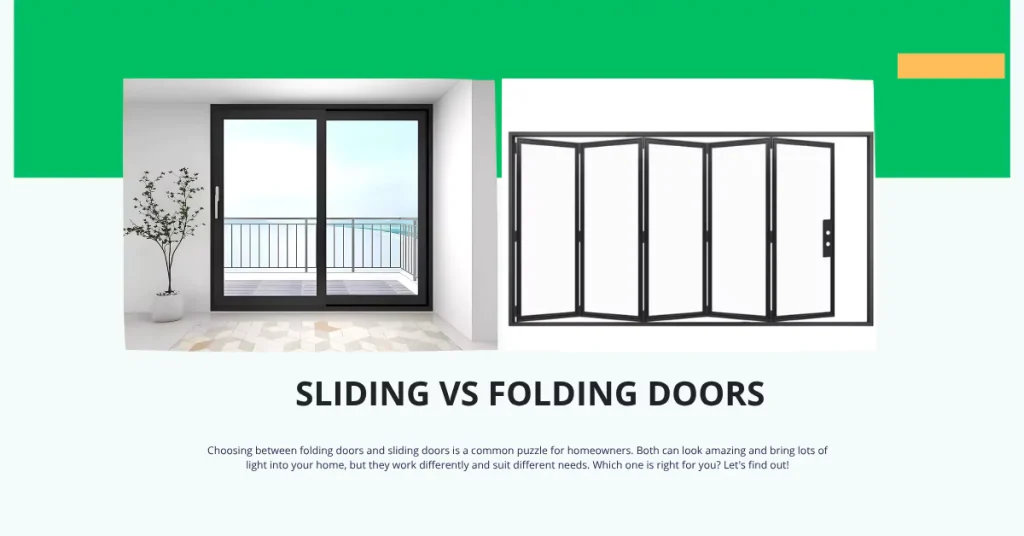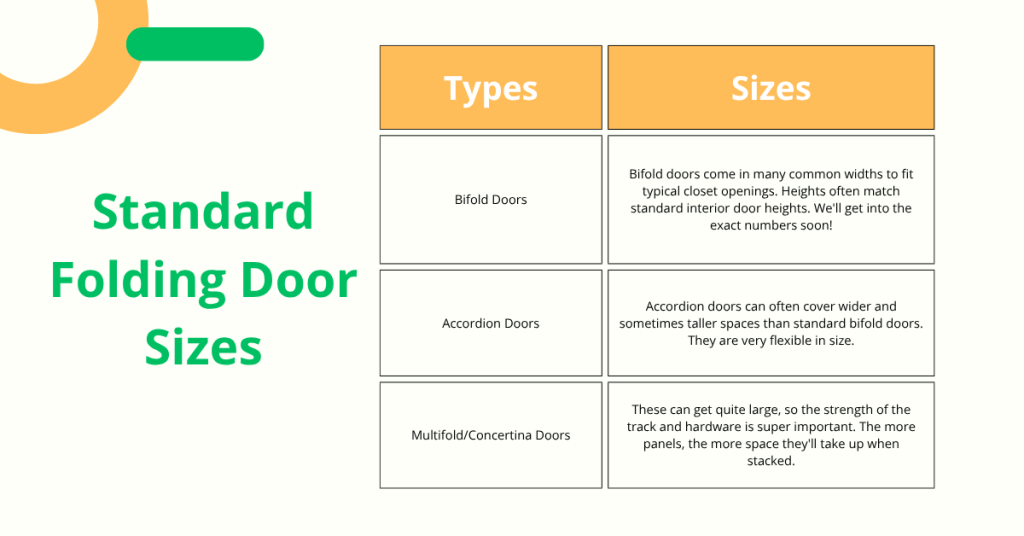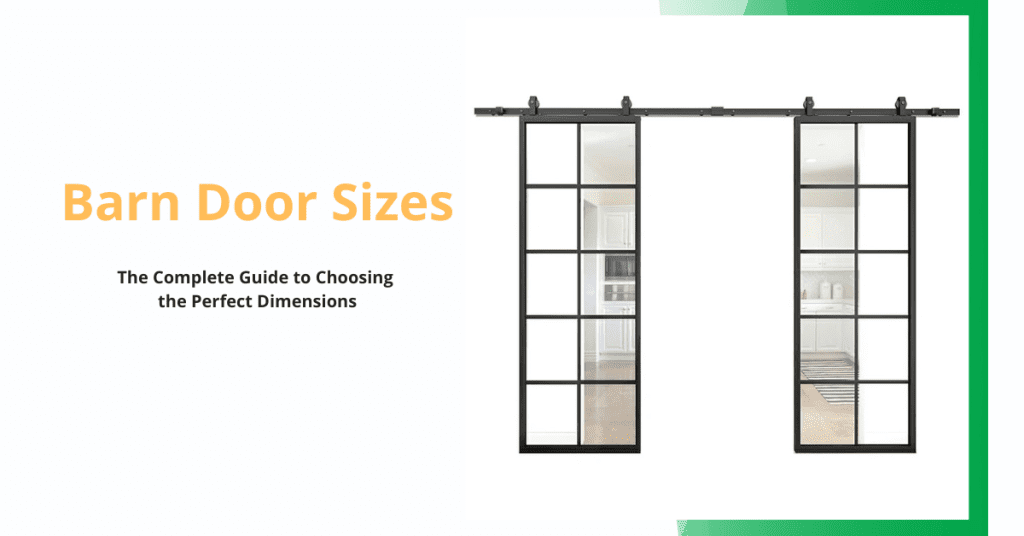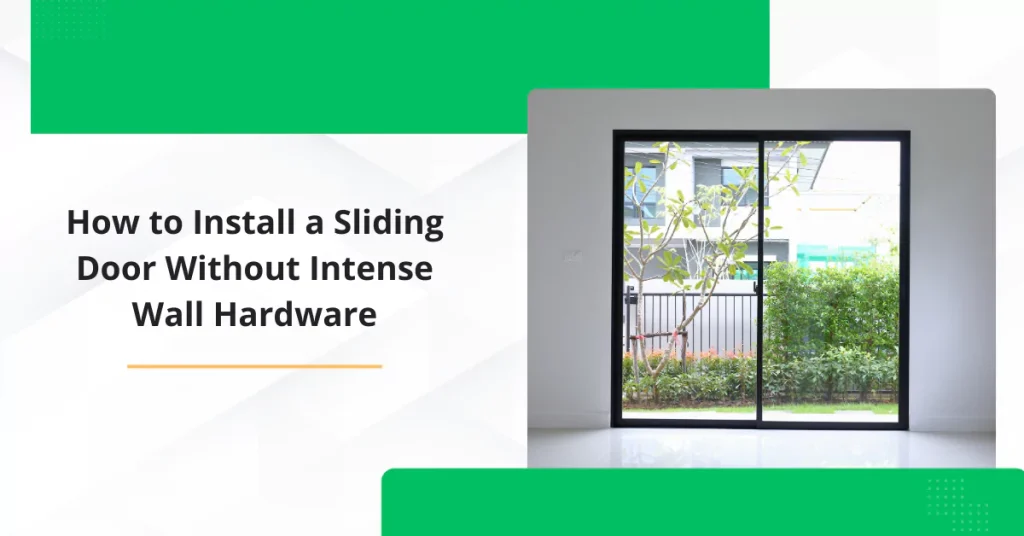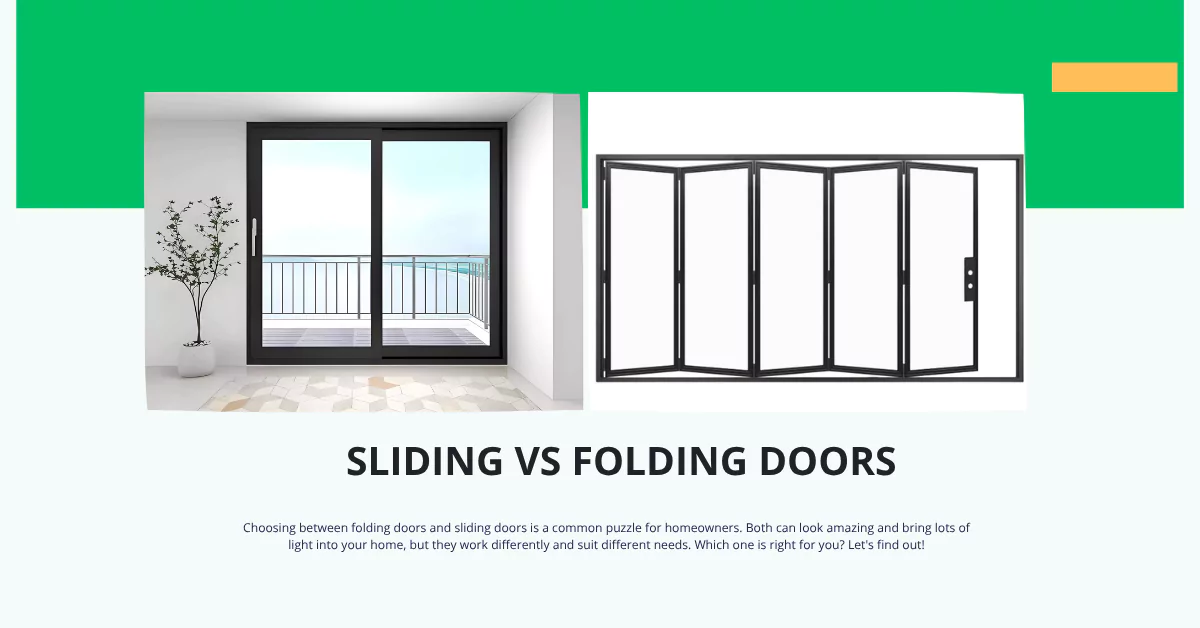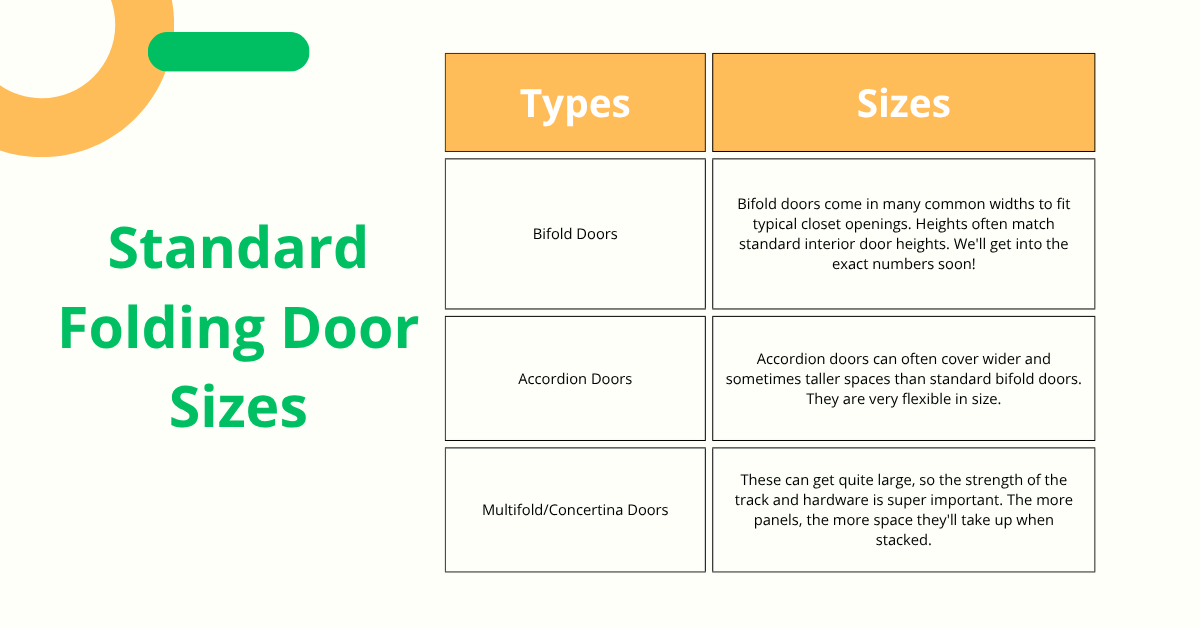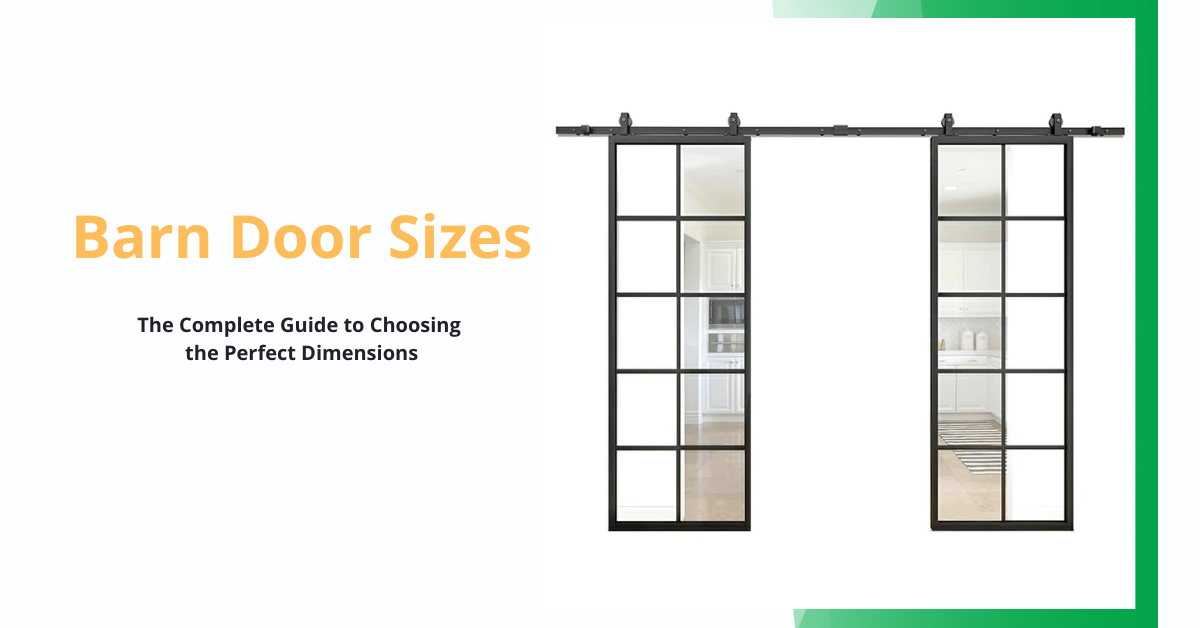French doors are fantastic – they bring light, style, and openness to our homes. (Need a refresher on why they’re great? Check What Are French Doors?). But like anything used daily, they can sometimes develop problems. Maybe you’ve got cracked glass? A door panel that’s starting to rot at the bottom? A handle that’s loose or broken? Or maybe the frame itself has seen better days?
Before you jump to the conclusion that you need brand new doors (which can be expensive – see How Much Do French Doors Cost?), take a breath! Can French doors be repaired? Very often, the answer is YES! Fixing specific issues like broken glass, rotten wood sections, or faulty hardware can be much more budget-friendly and extend the life of your beautiful doors.
Repairing your French doors instead of replacing them can:
- Save You Money: Repairs usually cost less than full replacement.
- Preserve Character: Especially important for older or custom doors that match your home’s style.
- Be More Sustainable: Fixing things is often better for the environment than buying new.
This guide is your go-to resource for tackling common French door repairs. We’ll help you figure out:
- What the different parts are called.
- How to diagnose the problem accurately.
- When a DIY repair makes sense vs. calling a pro.
- Step-by-step instructions for fixing glass, frames, rot, hardware, and more!
Safety First! Working with glass can be dangerous, and some frame repairs might involve structural elements. Always wear safety glasses and gloves, and if a repair feels beyond your skill level or involves the main structure of your house, call a professional!
Ready to give your French doors some TLC? Let’s get started!
French Door Anatomy: Understanding Your Door System
Knowing the parts helps you identify what needs fixing:
French Door Anatomy
Hover over or tap on parts to learn more about each component
French Door Anatomy
Hover over or tap on different parts of the door to learn about each component
Hover over or tap on different parts of the door to see descriptions
- Door Panels (Slabs): The main swinging parts, mostly glass.
- Glass Components:
- Lites: The individual panes of glass.
- Muntins/Grids: Strips dividing the glass into smaller lites (can be real or fake).
- Glazing: The putty or strips holding the glass in the panel.
- Frame (Surrounds the Panels):
- Jambs: The vertical side pieces and top horizontal piece of the frame.
- Threshold (Sill): The bottom piece you step over (exterior doors).
- Hardware:
- Hinges: Allow doors to swing.
- Handles/Locks: For opening, closing, securing. More info in the Hardware Guide.
- Flush Bolts: Secure the inactive door panel (top/bottom).
- Weatherstripping: Seals gaps around the doors/frame. Crucial for sealing! See How to Seal French Doors.
- Astragal: Vertical strip covering the center gap where doors meet.
- Trim/Molding: Decorative wood around the frame (inside/outside).
Different materials (wood, fiberglass, steel, vinyl) might have slightly different constructions, but these basic parts are common.
Diagnostic Framework: Identifying Your Door Problem
What exactly is wrong with your door? Let's figure it out.
A. Common French Door Problem Areas:
- Glass: Cracked, shattered, foggy between panes (failed seal).
- Frame/Panel: Rotted wood (especially bottom corners/rails), warped panels/frame, physical damage (dents, cracks), loose frame.
- Hardware: Loose/broken handles, faulty locks/latches, stiff/broken hinges, worn-out flush bolts.
- Threshold/Seals: Damaged threshold, worn/torn weatherstripping causing leaks/drafts.
- Operation: Sticking, sagging, doors not meeting evenly, hard to open/close.
B. Visual Inspection Checklist:
- Frame: Is it plumb (vertical) and level (horizontal)? Use a long level.
- Gaps: Are the gaps around the doors even (aim for ~1/8")? Measure top, bottom, sides.
- Damage: Look closely at bottom corners/rails for wood rot (poke gently with screwdriver – soft/crumbly?). Check for cracks, dents, peeling paint.
- Hardware: Are screws tight? Does latch align with strike plate? Do hinges look bent or worn? Is weatherstripping intact?
- Glass: Any cracks? Fog between panes? Is glazing putty cracked/missing?
C. Problem-Symptom Matrix (Examples):
- Symptom: Door sticks at top corner. -> Possible Cause: Sagging door (hinge issue).
- Symptom: Water pooling inside threshold. -> Possible Cause: Damaged threshold, poor door sweep seal, blocked sill drainage.
- Symptom: Draft coming from between doors. -> Possible Cause: Worn astragal seal, poor door alignment.
- Symptom: Handle loose. -> Possible Cause: Loose retaining screws.
- Symptom: Foggy glass. -> Possible Cause: Failed seal in double-pane unit.
D. Repair-or-Replace Decision Guide: Fix It or Nix It?
Can French doors be repaired? Often, yes! But sometimes replacement is smarter.
- Repair is Often Good When:
- Damage is localized (e.g., one broken pane, small area of rot, broken handle).
- The rest of the door/frame is in good structural condition.
- It's a standard repair (glass, hardware, minor rot).
- The doors are historically significant or custom-matched to your home.
- Consider Replacement When:
- Damage is widespread (extensive rot throughout panels/frame).
- The door is severely warped beyond reasonable repair.
- The core material is failing (e.g., delaminating fiberglass, major rust-through on steel).
- You want a significant upgrade in energy efficiency or security that repairs can't achieve.
- Repair costs approach the cost of a new, decent-quality door.
- Material Matters: Can I replace a steel French door with a wood one? Yes, if the rough opening size is compatible or can be adjusted. You'll need to ensure the new wood door is suitable for exterior use if applicable. See French Door Materials Guide.
- DIY vs. Pro Assessment: Get quotes for complex repairs and for replacement to compare costs effectively.
Alignment and Operation Repairs (Brief Overview)
If your door is sticking, sagging, or has uneven gaps, it might just need adjustment rather than repair of damaged parts.
- Common Cause: Loose hinges (especially top), house settling.
- Basic Fixes: Tightening hinge screws, sometimes using longer screws to bite into studs.
- Shimming: Placing thin shims behind hinge leaves can subtly shift door position.
- Detailed Adjustments: For step-by-step techniques on fixing alignment, sagging, sticking, and latching issues through adjustment, please see our dedicated guide: How to Adjust French Doors (Fix Alignment, Sticking, Dropping, Latching). This repair guide focuses more on fixing broken parts that might cause misalignment.
Glass Repair and Replacement: Clearing Things Up
Broken or foggy glass is a common issue. Can French door glass be replaced? Absolutely!
A. Glass Damage Assessment:
- Type: Is it single pane? Double pane (insulated glass unit - IGU)? Tempered safety glass (required for doors - often etched in a corner)? Decorative/leaded?
- Problem: Cracked? Shattered? Foggy/condensation between panes (this means the IGU seal failed and the whole unit needs replacement)?
- Frame: Is the wood/vinyl around the glass intact, or damaged/rotted too?
B. Glass Removal Techniques: Safety First!
How to remove glass from French door? It depends on how it's held in.
- Safety: Wear thick gloves and safety glasses! If glass is broken, carefully remove large loose pieces first. Put tape over cracked areas to help hold them together during removal. Have a sturdy container for broken glass.
- Identify Retainers: Look closely. Is the glass held by:
- Wood Stops/Molding: Thin strips of wood nailed or pinned around the glass edge (common on wood doors).
- Glazing Putty: A hard, clay-like substance sealing the glass (common on older wood doors).
- Vinyl Glazing Beads: Flexible vinyl strips snapped into a channel around the glass (common on vinyl/fiberglass doors).
- Metal Clips/Frames: Sometimes used, especially on commercial-style doors.
- Remove Retainers:
- Wood Stops: Carefully pry them off using a putty knife or small pry bar. Try not to break them if reusing. Remove any small nails left behind.
- Glazing Putty: May need to be softened (carefully with heat gun on low?) or chipped away gently with a chisel or putty knife. Work slowly to avoid damaging wood/glass.
- Vinyl Beads: Often pry out starting from a corner or midpoint using a stiff putty knife. Note their orientation for reinstallation.
- Remove Glass: Once retainers are off, the glass pane (or IGU) should be loose. How to remove glass pane from French door? Carefully push/pull it out of the opening. For large panes, use suction cups and get help! How to remove broken glass safely? Remove large pieces first, then carefully scrape/vacuum out smaller shards and dust.
C. DIY Glass Replacement Process: Putting in the New Pane
(Note: Replacing IGUs can be tricky; consider pro help if unsure.)
- Measure Carefully: Measure the opening width and height precisely where the new glass will sit. For IGUs, also measure the thickness. Deduct ~1/8" from width/height for clearance usually (check supplier advice).
- Order Glass: Order replacement glass (ensure it's tempered safety glass for doors!) or the correct size IGU from a local glass shop.
- Clean Opening: Scrape out all old putty/sealant. Ensure the opening is clean and smooth.
- Install New Glass:
- Single Pane: Apply a thin bed of glazing compound or silicone caulk. Carefully set glass in place. Secure with glazing points (small metal tabs pushed into wood) if needed. Apply outer layer of glazing putty, smoothing it neatly with a putty knife, OR reinstall wood stops/vinyl beads, securing stops with small brad nails.
- Double Pane (IGU): Set the IGU into the opening on setting blocks (small rubber shims at bottom). Ensure it's centered. Reinstall wood stops or snap vinyl beads back in place. Do NOT use putty directly against IGU seals. Often, butyl tape or specific glazing tape is used behind stops for sealing.
- Cleanup: Remove excess putty/caulk carefully. Let putty skin over before painting (days!).
Can you replace double pane glass in French doors? Yes, the entire sealed IGU unit is replaced. How to replace window pane in French door? Follow the steps above based on single/double pane and retainer type.
D. Repairing vs. Replacing Glass: Minor Fixes?
- Minor chips/cracks in single panes might be stabilized with epoxy kits (like windshield repair), but replacement is usually better for looks and safety in doors.
- Foggy IGUs cannot be repaired; the sealed unit must be replaced.
E. Glass Upgrade Options:
- While replacing, consider upgrading to Low-E coated glass for better energy efficiency or laminated glass for security/sound reduction. Can French door glass panels be replaced with whole glass? Maybe. If your door has true divided lites (many small, separate panes), replacing with one large pane requires rebuilding the door panel structure – usually not practical. If it has fake grids over a large pane, you can replace the large pane and potentially leave the grids off (see below).
F. Decorative Element Repairs: Grids & Mullions
- Can the plastic grids on French doors be removed? / How to remove grids…? Yes, often. Grids between the panes of an IGU cannot be removed. Grids attached to the surface (inside/outside) are usually held by clips or adhesive tape. Carefully pry them off. You might need to clean adhesive residue.
- How to remove mullions…? True mullions are structural pieces separating individual glass panes – these cannot be removed without rebuilding the door. Fake mullions/grids can usually be removed.
- Replacing: You can often order replacement grid kits from the door manufacturer if yours are broken.
Frame and Structural Repairs: Fixing the Foundation
Damage to the frame (jambs, header, sill) can cause major operational issues. How French door frames are made can they be repaired? Yes, often, especially wood frames.
A. Wood Frame Repairs: Dealing with Rot & Damage
- How to repair French door frame? Depends on damage!
- How to repair rotted French door frame?
- Assess: Scrape away loose/soft wood to find the extent of the rot.
- Treat: Apply wood hardener (liquid consolidant) to soak into and strengthen remaining porous wood fibers. Let it cure fully.
- Fill: Use a two-part epoxy wood filler (like Bondo for wood, or specialized wood epoxies). It's strong, waterproof, and sandable/paintable. Overfill slightly, let cure, then sand flush with surrounding wood.
- Replace: For severe rot, cut out the damaged section cleanly back to solid wood. Cut a replacement piece ("Dutchman patch") of the same wood type/dimensions to fit snugly. Glue and screw/nail it in place. Use epoxy filler for seams. Sand smooth.
- Fixing Cracks/Splits: Force wood glue into crack, clamp tightly until dry. May reinforce with screws.
B. Metal Frame Repairs:
- How to fix warped metal French doors? Minor warping might be adjusted with shimming during reinstall. Severe warping is very difficult to fix and often requires frame replacement.
- How to fix rusted bottom of steel French door? Sand away all rust down to bare, shiny metal. Treat with rust converter/inhibitor primer immediately. Fill any pits with auto body filler or metal-epoxy. Prime and paint promptly with DTM or quality exterior paint.
C. Complete Frame Replacement:
- How to replace French door frame? A big job! Involves removing interior/exterior trim, carefully detaching the old frame from the rough opening studs (cutting nails/screws), installing the new frame unit, ensuring it's perfectly plumb/level/square with shims, and securing it. Then reinstalling trim, caulking, etc. Similar complexity to installing a new door: How to Install French Doors.
Rotted Door Repair Techniques: Saving the Panel
Rot often attacks the bottom rail or lower stiles of wood door panels.
- Assessment: Same as frame rot – determine extent.
- Surface Rot: Clean, apply wood hardener, fill with epoxy wood filler, sand, prime, paint.
- Structural Rot:How to repair a French door rotted? Requires more intervention.
- Epoxy Consolidation: For moderate rot, after removing loose material, saturating with penetrating epoxy can stabilize it before filling with epoxy putty.
- Dutchman Repair: Cut out the rotten section entirely. Fashion a replacement piece from solid wood (rot-resistant type like cedar or treated pine preferred for bottom rails). Glue and screw/dowel the patch in place. Shape and sand to match original profile.
- Component Replacement: Sometimes the entire bottom rail can be carefully removed and replaced if joints allow. Advanced woodworking.
- Rebuilding/Restoration: How to rebuild a French door / How to repair old French doors? For valuable or historic doors with extensive damage, full disassembly, repair/replacement of individual parts, and reassembly might be undertaken by restoration specialists.
Threshold Repair and Replacement: The Doorstep Duty
The threshold takes a beating from foot traffic and weather.
- Diagnosing: Is it cracked, rotted (wood thresholds), dented (metal), or loose? Is water getting under it?
- Repair: How to repair French door threshold? Minor damage might be fixed with epoxy (wood) or hammered out (metal). Sealing underneath is key. Can repair threshold on French door? Yes, minor repairs and resealing are common.
- Replacement: How to replace French door threshold? Usually involves removing the old threshold (may require cutting fasteners or prying). Cleaning the area underneath thoroughly. Applying sealant/caulk. Setting the new threshold in place, ensuring it's level and properly sloped (if exterior). Securing it according to manufacturer instructions. Replacing often provides a chance to upgrade to a more durable or adjustable threshold.
Weatherproofing and Insulation Repairs: Plugging the Leaks
If seals are physically damaged (torn, cracked, missing), they need repair/replacement.
- Weatherstripping:Can the weather stripping be replaced? Yes, absolutely! This is common maintenance.
- How: Pull out old (kerf-in) or scrape off old (adhesive). Clean surface. Install new strip of same type/size. See How to Seal French Doors Guide for detailed types and installation.
- Drafts/Leaks: If drafts or leaks persist after checking/replacing weatherstripping, the issue might be door alignment. The door isn't compressing the seals properly. See How to Adjust French Doors Guide. Damaged frames or thresholds can also cause persistent leaks.
Hardware Repair and Replacement: Fixing the Function
Handles break, locks jam, hinges wear out.
A. Lock and Latch Mechanisms:
- How to fix French door lock: If sticky, try graphite lubricant first. If latch doesn't align with strike plate, adjust strike plate (see Adjustment Guide) or check door alignment. If mechanism is broken internally (won't turn, bolt stuck), replacement is usually needed.
- How to replace French door locks: Generally involves removing handles (see Hardware Guide), unscrewing the cylinder retaining screw (often on door edge), sliding out the old cylinder/mechanism, and installing the new one. Follow new lock's instructions.
- Shootbolt Locks (Multi-point): Can be complex. Check alignment first. If mechanism is broken, often requires parts from door manufacturer or professional service.
B. Handle Replacement:
- How to replace French door handles: Remove old handles (usually screws on inside rose). Install new handle set, ensuring latch mechanism engages correctly. More details in Hardware Guide.
- How to fix a French door knob/handle: If loose, tighten screws. If broken internally, replace.
C. Hinge Repair/Replacement:
- Tighten loose screws (use longer ones if needed). Replace bent or severely worn hinges. Ensure new hinges match size and screw pattern of old ones.
Special Repair Situations: Unique Challenges
- Kicked-in Door: How to fix kicked in French door? Assess damage: Is the frame split? Lock broken? Door panel cracked? Often requires replacing damaged wood sections (frame/door), installing frame reinforcement kits, and upgrading locks/strike plates. May need pro help.
- Replacing One Door: Can I replace one of the 2 French doors? Yes, but matching the size, style, thickness, material, and finish of the existing door can be difficult, especially if it's older. Also, the weight and operation might feel slightly different. Often better to replace both panels as a set for guaranteed match and function. If replacing one, ensure hinges align perfectly.
- Internal Blind Repairs: How to fix broken blinds in French doors? If blinds are sealed between glass panes, repair is usually impossible or requires specialized service to replace the entire IGU. If they are "add-on" blinds clipped over the glass, parts might be available from the manufacturer.
Material-Specific Repair Techniques: Quick Notes
- Wood: Prone to rot/swelling. Repairs often involve epoxy, patches, sanding, careful sealing.
- Steel: Prone to dents/rust. Repairs involve filling dents, sanding/treating rust, priming, painting.
- Fiberglass: Resists most damage but can crack under severe impact. Epoxy/fiberglass repair kits can fix cracks/holes. Surface scratches sometimes buff out or need touch-up paint.
Preventative Maintenance Guide: Avoiding Future Repairs
- Inspect Regularly: Check seals, hardware, finish seasonally.
- Clean: Keep thresholds clear, clean glass and frames.
- Lubricate: Hinges and locks yearly (use appropriate lubricant).
- Maintain Finish: Touch up paint/sealant promptly, especially on wood/steel exterior doors, to prevent water intrusion and rot/rust.
Conversion and Upgrade Options (Briefly)
- Repairs might be a good time to upgrade glass (energy efficiency), locks (security), or even consider larger changes if the opening allows. Can you replace French doors with bifold doors? Yes, if the opening structure/size works, but it's a full replacement, not a repair.
DIY vs. Professional Repair Decision Tree
- Good DIY: Replacing standard hardware, replacing single glass panes (if comfortable), minor wood rot epoxy repairs, replacing weatherstripping.
- Call Pro For: Replacing double-pane IGUs (heavy, need proper sealing), major rot/structural frame repair, repairing warped doors, fixing multi-point locks, leaded/specialty glass repair, significant structural damage (kicked-in door). Who to call to fix broken French doors? Look for experienced door repair specialists, restoration carpenters (for wood), or glass companies.
Troubleshooting Common Issues: Quick Fixes
- Door Won't Close After Repair: Did epoxy filler add too much bulk? Is new hardware slightly misaligned? Recheck alignment.
- Glass Loose After Replacement: Ensure retainers (stops/beads) are fully secured. Check if correct glazing method/sealant was used.
- Handle Still Sticky After Lube: Check alignment – is latch binding on strike plate due to door sag?
FAQs About French Door Repairs
Q: Can most French door problems be repaired?
A: Yes, many common issues like broken glass, faulty hardware, minor rot, and worn seals are repairable. Extensive rot or severe warping often necessitates replacement.
Q: Is it expensive to repair French doors?
A: Depends on the issue. Replacing hardware or a single pane might be $100-$300+. Fixing major rot or replacing specialty glass can cost $500-$1000+. Compare repair quotes to replacement costs.
Q: How long do repairs typically last?
A: Quality repairs using proper materials (like epoxy for rot, quality replacement hardware) can last for many years, often as long as the surrounding original material if maintained.
Q: Can I repair foggy double-pane glass?
A: No, the seal between the panes has failed. The entire Insulated Glass Unit (IGU) needs to be replaced.
Conclusion: Restore Your Doors' Charm and Function!
Don't let damaged French doors detract from your home's beauty or security! Many common problems – from cracked glass and rotten wood to broken handles and worn seals – can be effectively repaired, often as a DIY project. By correctly diagnosing the issue and using the right techniques and materials, you can restore your doors' functionality and appearance, saving money over full replacement.
Remember to prioritize safety, especially with glass and structural work, and don't hesitate to call a professional for complex repairs. Regular maintenance after the fix will help ensure your French doors operate smoothly for years to come.
If your doors are truly beyond repair, or if you're looking to upgrade to doors with better energy efficiency, security, or a new style, explore our wide selection of beautiful and durable French doors. We offer customizable options to perfectly fit your home!
